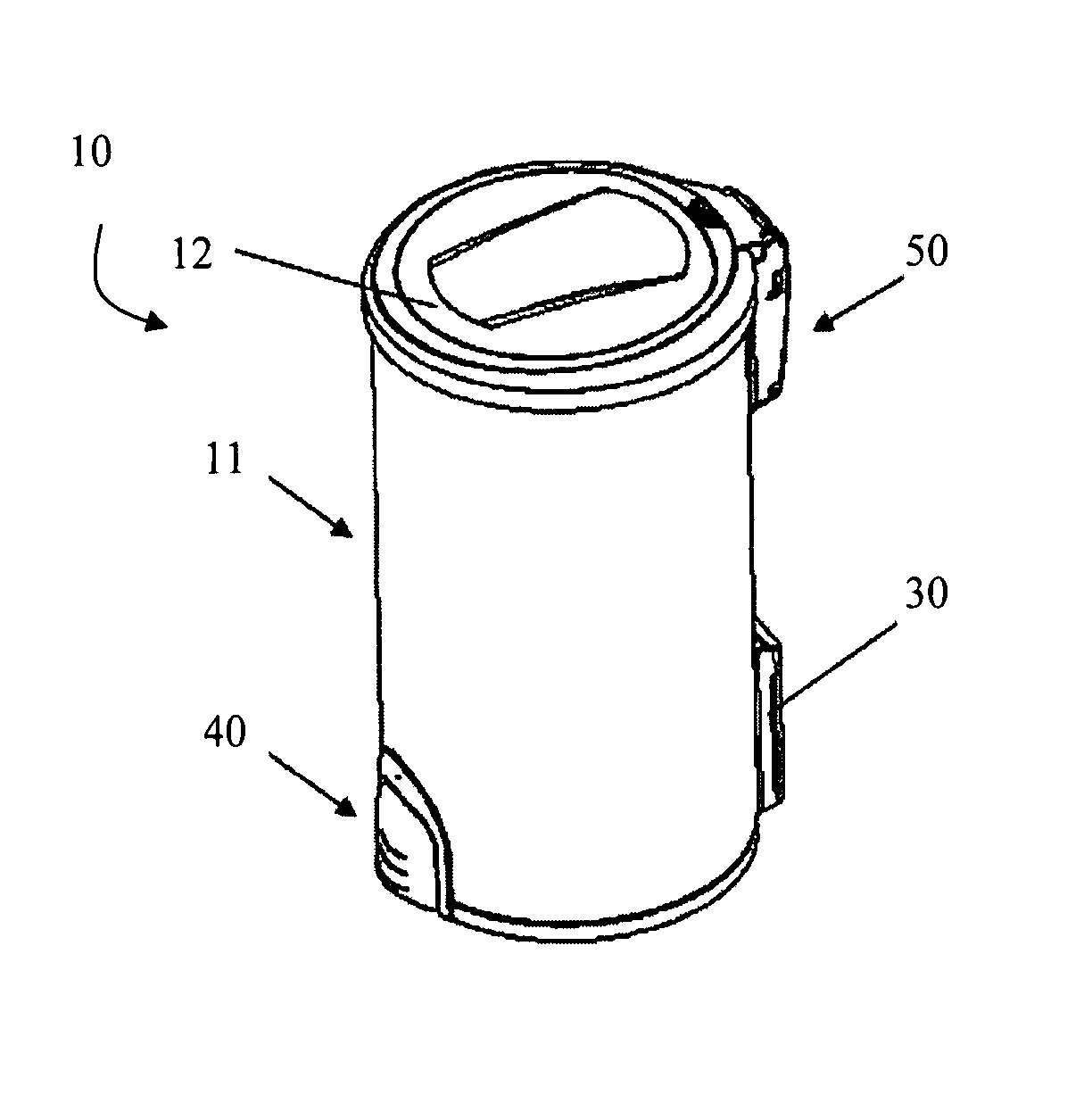Container with touch control arrangement
a container and touch control technology, applied in the field of containers, can solve the problems of causing other problems, affecting the use of storage cavities, and inconvenient or difficult for people to lift up the cover panel, so as to prevent the false operation of the foldable cover, prevent accidental damage to the electrical components, and maximize the usage volume of the storage cavity
- Summary
- Abstract
- Description
- Claims
- Application Information
AI Technical Summary
Benefits of technology
Problems solved by technology
Method used
Image
Examples
Embodiment Construction
[0043]Referring to FIGS. 1 to 3 of the drawings, a container, such as a trash container, according to a preferred embodiment is illustrated, wherein the container comprises a container unit 10, an actuation unit and a touch control arrangement.
[0044]The container unit 10 comprises a container body 11 having a storage cavity 111 and a container opening 112 communicating with the storage cavity 111, and a foldable cover 12 supporting at the container opening 112 to move between an opened position for exposing the storage cavity 111 through the container opening 112 and a closed position for covering the container opening 112 so as to enclose the storage cavity 111. For the trash container as an example, the container body 11 has a circular cross section and defines the container opening 112 at a top opening of the container body 11. The foldable cover 12 is pivotally coupled with the container body 11 at a top edge via a folding joint 13 such that the foldable cover 12 is folded at th...
PUM
 Login to View More
Login to View More Abstract
Description
Claims
Application Information
 Login to View More
Login to View More - R&D
- Intellectual Property
- Life Sciences
- Materials
- Tech Scout
- Unparalleled Data Quality
- Higher Quality Content
- 60% Fewer Hallucinations
Browse by: Latest US Patents, China's latest patents, Technical Efficacy Thesaurus, Application Domain, Technology Topic, Popular Technical Reports.
© 2025 PatSnap. All rights reserved.Legal|Privacy policy|Modern Slavery Act Transparency Statement|Sitemap|About US| Contact US: help@patsnap.com



